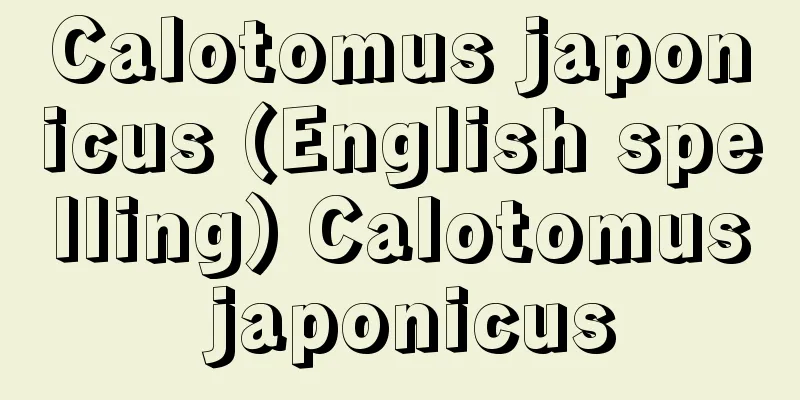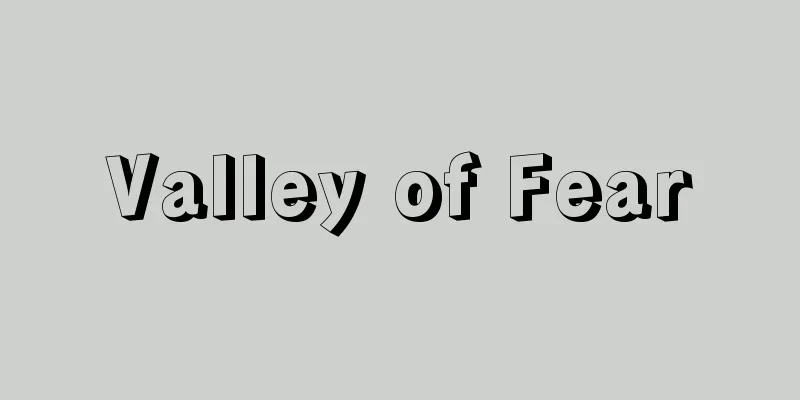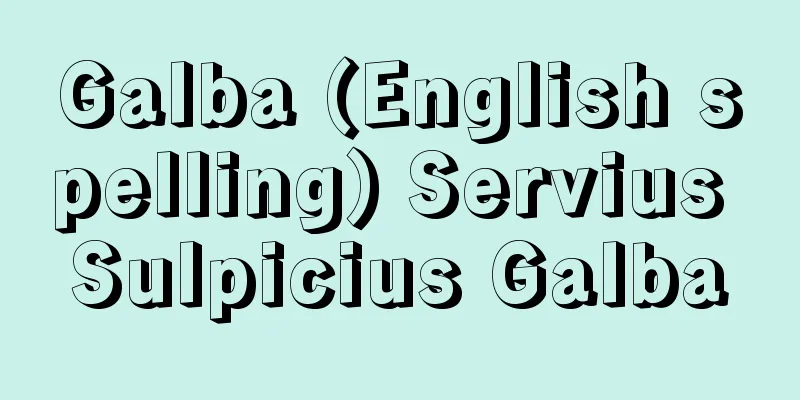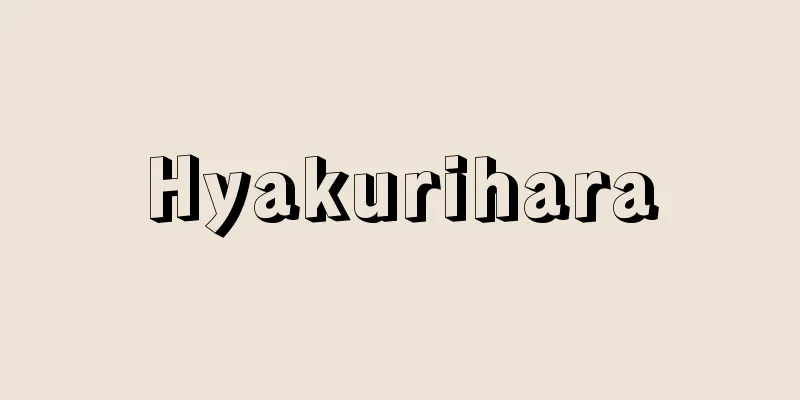Christian Art - Christ Today Art

|
It refers to all art related to Christianity. It does not only refer to church architecture and its murals, which are the center of Christian faith, or liturgical implements, but also includes a wide range of art related to the private religious life of believers. In terms of formal classification, architecture includes not only churches as meeting places (ecclesia), but also chapels, baptistery, mausoleums, and monastery buildings. Paintings include wall paintings such as mosaics, frescoes, and stained glass that accompany architecture, as well as illustrations (miniatures) from the Bible and liturgical books, and altarpieces that are votive paintings. In terms of content, Christian art can be said to be not only works that take as their subject matter the Old Testament, the New Testament, and the lives of saints, but also works that are personal expressions of faith. In addition to architecture and painting, Christian art can be said to be any art in general, including sculpture and crafts, that Christians created to glorify God. In particular, Christian art has been the most important theme in European art to this day. [Natori Shiro] The birth of Christian artJudaism strictly prohibited idolatry and opposed imagery. Christianity, which originated from Judaism, is also, in its essence, negative about expressing the invisible God with sensory, visible images that can easily lead to idolatry, as seen in the words, "God is spirit, and those who worship him must worship him in spirit and in truth" (John 4:24). The words of the early church fathers from the 2nd to 4th centuries show a negative view of such imagery. However, as can be seen in the frescoes and sarcophagus reliefs in the many catacombs (underground tombs) that remain in Rome, Christian art existed from around the end of the 2nd century, even before the victory of Christianity in the early 4th century (Edict of Milan, 313). Even Judaism, which prohibited idolatry more strictly than Christianity, actually had imagery, as shown by the wall paintings of the Dura-Europos synagogue in the 2nd and 3rd centuries. Christian art was also born as a form of religious art within the framework of late ancient Roman art. However, throughout history, there have been frequent instances of reflection on the fact that Christian art was born in violation of Christian doctrine, as seen in the views of theologians of the time, who were aware of the fickleness of faith in things painted with material colors and forbade religious images carved from stone or wood, citing the danger of idolatry. Iconoclasm, a major religious and political event that shook the Byzantine Empire from 726 to 843, was a debate over whether or not it was acceptable to express the invisible presence of God through art. Although the proponents of imagery ultimately won, a similar phenomenon was seen in medieval Western Europe in the architecture of Cistercian monasteries, which practiced the theology of St. Bernard in the 12th century. There, all imagery was avoided, and plant motifs were the only decoration permitted. There was a world of beauty that contrasted greatly with the iconography of the magnificent Romanesque art of the same period, such as the Cluniacs. On the other hand, the writings of the early church fathers and the resolutions of religious councils in the 4th and 5th centuries also contain views that actively promote the use of art. In order to honor martyrs, the merits of the martyrs were depicted in paintings, and the stories from the Old and New Testaments were painted on the walls of churches, with the idea being that they would be useful for educating illiterate believers. During the persecution period, Christian art gradually established an iconographic system from the 3rd to the 4th century, as seen in the murals of private churches, meeting places in the catacombs, and tombs, as well as the relief decorations of sarcophagi for the dead. However, the greatest leap forward was made after the victory of Christianity in 313, when churches were built one after another, mainly in Palestine and Rome, along the Mediterranean and Black Sea coasts, and even in the interior of Asia Minor and the Middle East. At this point, the iconographic system of murals was also organized and established according to the purpose of the architecture, such as general churches, martyrs' memorial halls, baptistery, and mausoleums. [Natori Shiro] Medieval Christian ArtNaturally, Christian art in this early period was heavily influenced by Roman art of late antiquity. For example, the shepherd who comforted the souls of the dead, which was common in the funerary art of Roman art at that time, was used as an image of Christ as the "Good Shepherd," and Orpheus playing the lyre among animals came to represent Christ. There are many examples of symbolic forms of expression in Roman art being directly adapted for Christian art. Furthermore, the representation of Christ in glory, in which a standing or seated figure is placed at the center of the apostles, was also born from the form of imperial worship in the Roman Empire. From a stylistical point of view, the transcendental and spiritual character that is one of the characteristics of medieval Christian art can even be said to have been cultivated within the framework of the transformation of Roman art itself in the 3rd and 4th centuries. The first purpose of Christian art is to glorify the glory of God, which leads to the worship of martyrs and saints. Christ in glory is painted on the apse wall of the sanctuary at the east end of the church, and scenes from the life of Christ from the Old Testament and the New Testament, as well as the lives of saints, are generally painted on the north and south side walls of the church for the second important purpose of edification of the faithful. In addition to wall paintings using mosaic and fresco techniques, there are also illustrations on copies of the Bible and liturgical books, and sacred panel paintings unique to Byzantine art. Large-scale sculptures were revived after the 11th and 12th centuries. In crafts, there are liturgical utensils made with embossed gold and silver, and ivory reliefs seen on reliquaries. In the Gothic art period, stained glass techniques flourished, and Christian art showed a variety of developments depending on the era, region, and purpose of use. From the 6th century onwards, Byzantine art in Eastern Europe developed independently, mainly in the capital Constantinople (present-day Istanbul), and produced Christian art of a different quality from medieval art in Western Europe until the fall of the empire in 1453. After the first Golden Age, which was realized under Emperor Justinian in the 6th century, and especially after the end of the Iconoclasm movement, the mid-period from the 9th to 13th centuries saw the establishment of an iconographic system for church architecture and wall paintings, and the flourishing of icons, and magnificent examples of this can still be found today in countries within the Greek Orthodox world. In Western Europe, Christian art made steady progress from ancient art to medieval art, centered on Rome, even during the turmoil of ethnic migration. However, the true beginning of medieval art in Western Europe can be said to be the beginning of the cathedral era in Romanesque art in the 11th and 12th centuries, after the Carolingian period in the 9th century. Large sculptures, which had been avoided for theological reasons since late antiquity, were revived, and in particular, majestic figures of Christ based on the "Last Judgment" were carved on the exterior walls of churches' main entrances. Furthermore, in the interior capital sculptures, a decorative system with a highly educational role was established, not only featuring Christian themes, but also allegories of virtue and vice rooted in the annual calendar, working days, and scenes from daily life. Romanesque churches, including frescoes, were also considered the Bible of the poor, and were called stone encyclopedias. This tradition was further developed in the next Gothic art, which appeared from the second half of the 12th century. However, stylistically, the two are very different. In contrast to the mysterious and abstract nature of Romanesque art, Gothic art is characterized by realistic and direct expression of human emotions. As the life of citizens in cities became more active, Gothic art was already a direct reflection of that activity, and Gothic cathedrals, with their exterior walls decorated with sculptures in every nook and cranny and windows filled with stained glass, came to occupy the very center of civic life. [Natori Shiro] After the RenaissanceHowever, this era of Christian art came to an end in the 14th century, and with the start of the Renaissance, secular art became mainstream. The era of Christian art as a major period style as seen in medieval art came to an end, and as art gradually became independent of religion, Christian art was left to the work of individual painters. Of course, many Christian art works such as church murals and altarpieces were created during the Renaissance, but they had already lost their leading role in influencing the religious sentiment, morality, and even aspects of life of the people as they had in the Middle Ages. During the Reformation in the 16th century, Christian art was once again put to a great test. Protestant churches recognized the danger of idolatry in traditional art, and the Calvinist movement to destroy sculptures in cathedrals was particularly rampant, mainly in northern France, and traces of this are still vividly visible today. The Roman Catholic Church, in opposition to the Protestant Reformation and the paganism of Renaissance culture, convened the Council of Trent in the second half of the 16th century to rebuild Christian art, which also laid the foundations for modern art. Christian art seemed to have been revived at one point by the magnificent church architecture and murals of Baroque art, but this gradually became a mere formality, and apart from the work of a few painters such as El Greco and Rembrandt in the 17th century, church art can be said to have been in decline until the 19th century. It was only in the 20th century that truly new Christian art began to emerge, including the works of Rouault, Chagall's stained glass in Reims Cathedral, Matisse's murals in a chapel in the south of France, and Leonardo Foujita's murals in a chapel on the outskirts of Reims. [Natori Shiro] Source: Shogakukan Encyclopedia Nipponica About Encyclopedia Nipponica Information | Legend |
|
キリスト教に関する美術全般をさす。単にキリスト教徒の信仰の中心たる教会堂建築およびその壁画、ないしは典礼上の用具だけではなく、信徒の私的な信仰生活にかかわるものまで広範囲にわたる。形式上の分類に従えば、まず建築では、集会所(エクレシア)としての教会堂以外にも、礼拝堂、洗礼堂、廟堂(びょうどう)、修道院建築などが含まれる。絵画も、建築に付随したモザイク画、フレスコ画、ステンドグラスといった壁画以外に、聖書や典礼書などの写本挿絵(ミニアチュール)、奉納画たる祭壇画などがある。内容的には、『旧約聖書』『新約聖書』、聖者伝に題材をとったものだけでなく、個人的な信仰表現としてのものも、キリスト教美術といえる。建築、絵画以外にも、彫刻、工芸など美術全般にわたって、キリスト教徒が神の栄光をたたえるために表したものが、キリスト教美術といえるであろう。とくにヨーロッパの美術においては、今日に至るまで、もっとも重要な主題であった。 [名取四郎] キリスト教美術の誕生ユダヤ教は厳しく偶像崇拝を禁じ、画像表現に反対した。ユダヤ教を母体とするキリスト教も、その本質においては、「神は霊なれば、拝するものも霊とまこととをもって拝すべきなり」(「ヨハネ福音書」4章24節)のことばにみるように、不可視な神の存在を、偶像崇拝に陥りやすい感覚的で可視的な画像で表現することに否定的であるのはいうまでもない。2~4世紀の初代教会の教父たちのことばには、こうした画像表現についての否定的見解が認められる。しかし、ローマに数多く残るカタコンベ(地下墓所)のフレスコ壁画や石棺浮彫りなどにみられるように、4世紀初頭のキリスト教の勝利(313、ミラノ勅令)以前にも、すでに2世紀末ごろからキリスト教美術は存在した。キリスト教以上に厳しく偶像崇拝を禁じたユダヤ教でも、実際には、2~3世紀のドゥラ・エウロポスのシナゴーグの壁画が示しているように、画像表現はあった。キリスト教美術も古代末期のローマ美術の枠内で、一つの宗教美術として誕生したのである。しかし、物質的な色彩で描かれたものへの信仰の移ろいやすさを自覚し、石材や木材で彫られた聖像を偶像崇拝の危険があると禁じた当時の神学者たちの見解にみるように、キリスト教美術がキリスト教の教義に反して生まれてしまったことへの反省は、歴史を通じてたびたび現れる。 東ヨーロッパの中世美術であるビザンティン美術が経験した聖像破壊運動(イコノクラスム)は、726年から843年の間ビザンティン帝国を揺るがした宗教的、政治的大事件であったが、本来不可視であるべき神の存在を美術という手段で表現することの可否をめぐる論争であった。最終的には画像擁護論者が勝利を収めたが、西ヨーロッパ中世においても同様な現象は、12世紀の聖ベルナルドゥスの神学を実践したシトー会修道院建築に認められる。そこではいっさいの画像表現を避け、植物文様が唯一の許された装飾であった。同時代のクリュニー派などの壮大なロマネスク美術の図像体系と比較して、きわめて対照的な美の世界がそこにはある。しかし他方では、初代教会の教父たちの著作や、4世紀ないし5世紀の宗教会議の決議事項には、美術を積極的に利用しようとする見解も含まれている。殉教者をたたえるためにその功績を絵画によって表し、教会堂の壁画として描かれた『旧約聖書』や『新約聖書』の物語は、たとえば読み書きのできない信徒の教化に役だつなどの考えであった。迫害時代には私宅教会やカタコンベ内の集会所や墓所の壁画、さらには死者を弔う石棺の浮彫り装飾などにみるように、3世紀から4世紀へと至る時代に、キリスト教美術はしだいに図像体系を整えてゆく。しかし、なんといっても大きな飛躍を遂げたのは、313年のキリスト教の勝利以降のことで、パレスチナおよびローマを中心に、地中海沿岸や黒海沿岸、さらには小アジアや中近東の内陸部に至るまで、次々に教会堂が建造されていった。ここに至って壁画も、一般教会堂、殉教者記念会堂、洗礼堂、廟堂などの建築の使用目的に応じて、その図像体系が整理され、確立されてゆく。 [名取四郎] 中世キリスト教美術こうした誕生期のキリスト教美術は、おのずと古代末期のローマ美術の影響を多大に受けていた。たとえば、当時のローマ美術の葬礼美術に一般的な死者の魂を慰める羊の群れを従えた羊飼いを「善(よ)き牧者」たるキリスト像表現として用いたり、動物たちの間で竪琴(たてごと)を奏でるオルフェウスがキリストを表すことになったり、ローマ美術中の象徴的な表現形式がそのままキリスト教美術へ転用された例も多い。また立像ないしは座像のキリストを使徒たちの中心に配した栄光のキリスト表現も、ローマ帝国の皇帝崇拝の形式を借りて生まれたものであった。様式的にみても中世キリスト教美術の一つの特質となる超絶的、精神主義的な性格は、3世紀から4世紀におけるローマ美術そのものの変質の枠内で培われたものとさえいえる。 キリスト教美術の第一の目的は、なにはさておき神の栄光を賛美することにあり、それは殉教者崇拝や聖者崇拝へとつながってゆく。教会堂東端の内陣部アプシス壁面には栄光のキリストが描かれ、堂内南北の側壁面には、第二の重要な目的と思われる信徒の教化のために、『旧約聖書』物語や『新約聖書』のキリストの生涯の諸場面、さらには聖者伝などが描かれるのが原則となってゆく。モザイク技法やフレスコ技法の壁画以外にも、聖書や典礼書の写本に施された挿絵、ビザンティン美術に特有の聖なる板絵イコンなどがある。大規模な彫刻がふたたび復活するのは11~12世紀以降のことである。工芸においては、金や銀に打出し技法を施した典礼用の諸器具、聖遺物箱などにみる象牙(ぞうげ)浮彫りなどがある。ゴシック美術時代に至ってステンドグラスの技法が栄えるなど、キリスト教美術は時代によって、地域によって、そしてその使用目的に応じて、多彩な展開を示してゆくことになる。6世紀以降、東ヨーロッパのビザンティン美術は首都コンスタンティノポリス(現イスタンブール)を中心に独自の展開を示し、1453年の帝国滅亡の日まで、西ヨーロッパの中世美術とは質を異にするキリスト教美術を発展させた。6世紀のユスティニアヌス皇帝時代に実現された第一期の黄金時代ののち、とくに聖像破壊運動の終結後、9世紀から13世紀に至る中期には、教会建築および壁画の図像体系の確立、そしてイコンの隆盛などがあり、今日もギリシア正教圏内の国々にはみごとな遺例が残されている。 西ヨーロッパでは民族移動の混乱期にも、ローマを中心に古代美術から中世美術へとキリスト教美術は着実にその歩みを進めていった。しかし西ヨーロッパの真の中世美術の幕開きは、9世紀のカロリング朝時代を経たのち、11~12世紀のロマネスク美術における大聖堂時代の始まりにあるといえる。古代末期以来、神学上の理由から避けられていた大彫刻が復活し、とくに教会の正面入口の外壁面には「最後の審判」を基調とした荘厳なるキリスト像が彫られるようになる。さらに内部の柱頭彫刻などでも、単にキリスト教の主題のみならず、1年の暦や労働の暦日、日常生活の情景に根ざした善徳と悪徳のアレゴリーなど、きわめて教育的役割をもった装飾体系が確立された。フレスコ壁画をも含めて、ロマネスク時代の教会は貧しい人々の聖書ともみなされ、石の百科全書ともよばれることになる。この伝統は12世紀後半から現れる次のゴシック美術でさらに発展する。しかし様式的には両者は非常に異なる。ロマネスク美術が神秘的で抽象的な性格をもっていたのに反し、ゴシック美術には写実的で人間感情の直接的表現が顕著となっている。都市の市民生活が活発となり、その活動の直接の反映がゴシック美術にはすでに認められるわけで、外壁面が隅々まで彫刻で飾られ、窓という窓には全面にステンドグラスがはめ込まれたゴシックの大聖堂(カテドラル)は、まさに市民生活の中心的位置を占めることになったのである。 [名取四郎] ルネサンス以降しかしこうしたキリスト教美術の時代は14世紀で終わりを告げ、ルネサンス美術の時代に入ると、主流は世俗美術に傾いてゆく。中世美術にみたような大きな時代様式としてのキリスト教美術の時代は終わり、美術が宗教からしだいに独立してゆく過程で、キリスト教美術も個々の画家の作業に任されることになる。もちろんルネサンス時代にも教会堂壁画や祭壇画など数多くのキリスト教美術は生まれたが、中世にあったような宗教感情、道徳、さらには生活の面における民衆に対する指導的立場をすでに失ってしまった。16世紀の宗教改革の時代にキリスト教美術はふたたび大きな試練の場にたたされる。プロテスタント教会は従来の美術に偶像崇拝の危険を認め、とくにカルバン派が行った大聖堂の彫刻破壊運動は北部フランスを中心に猛威を振るい、その痕跡(こんせき)はいまもなお生々しく残っている。ローマ・カトリック教会側は宗教改革に対抗し、さらにルネサンス文化の異教主義に対抗して、16世紀後半にトリエント公会議を開いて立て直しを図り、キリスト教美術もここで近代美術にふさわしい基礎を築くことになる。バロック美術の壮大な教会建築と壁画によって、キリスト教美術はいったん再興したかにみえたが、それもしだいに形骸(けいがい)化し、17世紀のエル・グレコやレンブラントなどの幾人かの画家の業績を別にすれば、19世紀まで教会美術は衰退の道をたどったといえる。 20世紀になってやっとルオーの作品群をはじめ、ランスの大聖堂にあるシャガールのステンドグラスや、南フランスの一礼拝堂のマチスの壁画、ランス郊外の礼拝堂にあるレオナルド藤田(嗣治(つぐじ))の壁画など、真の新しいキリスト教美術が芽生えつつある。 [名取四郎] 出典 小学館 日本大百科全書(ニッポニカ)日本大百科全書(ニッポニカ)について 情報 | 凡例 |
<<: Women's Christian Temperance Union
>>: Persecution of Christians - The Assassination of Jesus Christ
Recommend
Tsujigahana - Tsujigahana
A type of pattern dyeing. It is an elegant pattern...
Callahan
American photographer. Born in Detroit. After stud...
Jacobean style
A style of architecture and craftsmanship during ...
Oikopleura longicauda (English spelling) Oikopleuralongicauda
...When swimming, they swing their tails in a bou...
Electron energy loss spectroscopy
...Electron spectroscopy by the former process is...
Weber, M. (painter) - Weber
…Two innovative movements emerged in New York at ...
American Dianthus - American Dianthus
→ Dianthus Source: Shogakukan Encyclopedia Nippon...
Shiretoko Peninsula
A peninsula located at the eastern end of Hokkaid...
Basic wage - Kihonchingin
…Wages in Japan had become extremely complicated ...
Pseudocilia - Pseudocilia
…The cells are spherical, 5 to 10 μm in diameter,...
Western European Union (English spelling)
Abbreviation: WEU. Also known as the Western Euro...
Mount Kiso
The old name for the forest area in the upper reac...
Catechetical School of Alexandria
A Christian educational institution in Alexandria ...
Garga Samhita - Garga Samhita
...The astrology of this period is well known in ...
Dispute group - Sogidan
〘 noun 〙 A group of workers organized to come toge...









